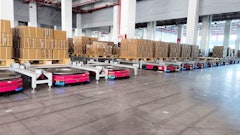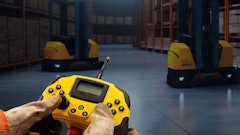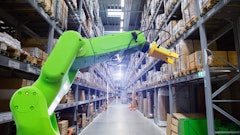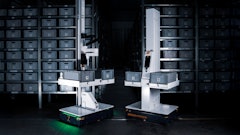
Gen Z, the first generation immersed in tech, social media, and entertainment, is changing the face of the modern workforce. Also known as the “digital native workforce”, this generation brings radically different expectations for work life, tech integration, communication and collaboration.
While reckoning with this generational shift, supply chains and warehouses are also dealing with labor shortages, which hit a 17-year-high in 2023, a workforce looking for increased flexibility, and a labor pool with more diverse skills, backgrounds, and experiences than ever.
Attracting, managing and maintaining today's and tomorrow's warehouse labor requires an updated labor management approach and a technology upgrade to keep up.
Filling the New Workforce Pipeline
Supply chains that thrive bring in fresh generations of thought, empower them to share their perspectives, and then include them in the decision-making and goal-setting process. The same applies to the warehouse. If you're constantly interviewing people who want to go from their couch to a middle management position, you may have a suitable candidate pipeline problem. The best way to attract new talent is to offer them a place to start and a path to upskilling, reskilling and training from a leadership perspective. Let them know that they will be working in fast-paced, dynamic, tech-forward, problem-solving situations. They’ll be working for a company that encourages them to innovate, experiment, and optimize and that will invest in them to improve, grow, and advance. This will be far more appealing than stodgy leadership, which just wants them to drive a forklift up and down the aisle, take their paycheck, and go home.
If we consider that the digital native workforce uses the latest consumer tech in their personal lives, they will also be less than impressed with a warehouse running off printouts, greenscreens and Excel spreadsheets. Nothing turns candidates off faster than paper and negative Glassdoor reviews. So many warehouses are guilty of running on paper, running on green screens, having bad management, and believing that they can squeeze people to be productive by screaming at them or not engaging. Those types of operations have to go extinct.
Labor Management to Incentive the New Workforce
As of April 2024, only 30% of U.S. workers feel engaged, according to a Gallup report, an 11-year low. Something has to change. Understanding that this digitally native workforce is here to stay, we must meet them where they are, so how we engage with them is paramount. For warehouses, one necessity is switching from using labor management to squeeze blood from a stone to, instead, incentivizing the actions you want. There are many approaches that aren’t focused on negativity, including rewards, enticements or gamification elements of labor management to get these new entrants to deliver their highest level of productivity.
Labor management has to be about aligning incentives with behaviors, ensuring that systems are genuinely usable, and that they're as fun to interact with as consumer applications. When managers do scoreboard somebody, it has to be for a purpose. Warehouses certainly have to do a good job of coaching out poor performers because poor performers do erode culture and bring everybody else down. But to attract and keep those people you do want to come into the warehouse and put in 100% effort, labor management to drive incentives has to be the new construct.
Getting Leaders Back on the Floor
Speaking of culture, that is a cheat code for the effectiveness of any warehouse. Strong leaders have strong cultures that get things done. One of the hallmarks of strong leadership is engaging workers where they are: on the warehouse floor. If managers spend all their time running reports or clicking through green screens to figure out who's the best performer or where the best or worst associates are, they will be bound to their cube. They’re going to be an Excel wizard or an Olympian in pivot tables, but they'll lose the perspective of the floor. And their teams will feel ignored and disengaged.
Solutions that allow supervisors to quickly gain real-time visibility and insight help keep warehouse operations on track and drive the required outcomes without bogging them down. We need to untether leaders from legacy technologies so they can engage with their team members and ensure they feel seen, heard, and valued.
Smooth Operations Equal a Better Work Environment
Today's warehouse labor forecasting solutions can help leaders get a better handle on real-time operations as well as predict and plan for future work. Platforms that utilize machine learning and AI can show managers what work is coming, where, and when. Some can deliver a future, granular view into how many workers, which workers with what skills are needed and schedule them days into the future. Then, as each day passes, these labor management solutions can also deliver insight into how the team is performing against the day's goals. Surprise work drops, line backups, and potential missed targets can mean overtime to catch up.
With real-time and predictive visibility, leaders are alerted early enough to make course corrections and address any issues before the end of the day, leading to smoother operations and less overtime. Less surprise overtime means lower labor costs but also happier workers. While some workers may appreciate the extra pay, it's generally better when planned for. Instead of having to ask the babysitter to stay later or make other arrangements on the fly, workers can keep their schedules aligned to their requirements.
MIT professor Dr. Yossi Sheffi likens supply chains to social networks – they're far more than faceless organizations, automated processes and financial transactions. So much of supply chain success or failure relies on human relationships and trust. For a generation raised on social media, embedded with technology, and seeking constant connection, this may be even more true.
Leveraging the latest warehouse labor management solutions to embrace the needs of the modern workforce can lead to greater employee engagement as well as productivity, preparing you for the next challenge to come.


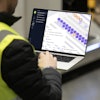

![Pros To Know 2026 [color]](https://img.sdcexec.com/mindful/acbm/workspaces/default/uploads/2025/08/prostoknow-2026-color.mduFvhpgMk.png?auto=format%2Ccompress&bg=fff&fill-color=fff&fit=fill&h=100&q=70&w=100)
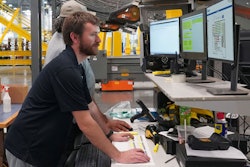


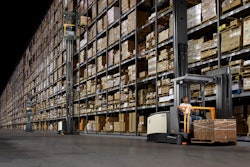
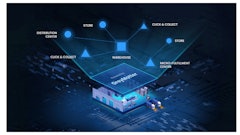
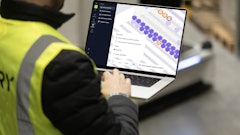
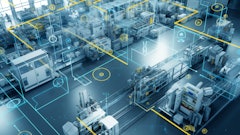
![Pros To Know 2026 [color]](https://img.sdcexec.com/mindful/acbm/workspaces/default/uploads/2025/08/prostoknow-2026-color.mduFvhpgMk.png?ar=16%3A9&auto=format%2Ccompress&bg=fff&fill-color=fff&fit=fill&h=135&q=70&w=240)
